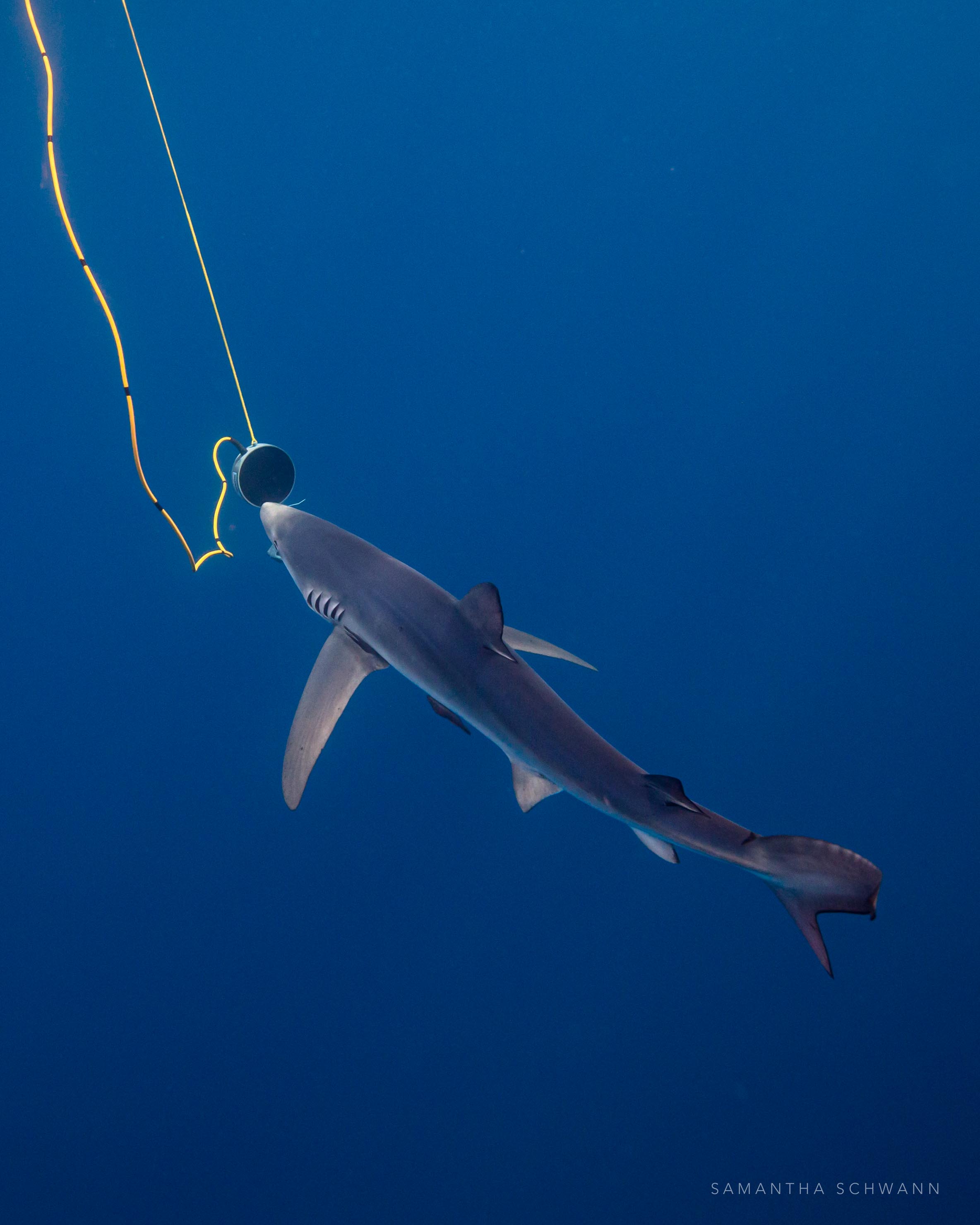In 2018 I was doing some research for an upcoming talk, and stumbled across an article where Great White shark tour operators in Australia were using music to attract sharks. Sound pumped via a suspended underwater speaker yielded some pretty interesting results - it attracted the White sharks just as well as chum, elicited a more natural behavior, and resulted in better photographs for guests.
Sharks are especially responsive to low-frequency, pulsing sounds affectionately referred to as the “Yummy Hum”, as it is the sound given off by struggling / dying fish. As the operators experimented with different sounds, they discovered the White sharks not only had a preference in genre (Metal / Rock), but the reactions were the strongest with the Australian rock band AC/DC, and even more specifically with the songs “Back In Black”, and “You Shook Me All Night Long”.
Sharks have incredible sensory systems which would be affected by sound, including hearing, Ampullae of Lorenzini to detect electrical impulses from the speaker, and the lateral line which would detect sound waves in the water. While any sound would activate these senses, clearly there was a specific attribute with AC/DC which was particularly attractive.
I thought it would be interesting to try this with the white sharks cousin - the mako, so bought an underwater sound system and flew down to see my friends at Cabo Shark Dive. We didn’t know how the sharks would react and kept it to a small crew: Jacob: boat owner / marine biologist / shark expert / photographer; Miguel: expert shark handler / photographer; the Captain, and myself. We set out several miles offshore to the Continental Shelf, which plunges down past 6,000 feet, lowered the speaker over the side of the boat to a 30ft depth, put my laptop on a loop of 6 AC/DC tracks and one “refresher” song to keep us all sane, hit play, and waited.
You know how Krispy Kreme vents out the smell of warm, delicious, freshly-baked doughnuts to attract customers? Chumming for sharks is kind of the same: you chuck an absolutely vile mixture of fish guts, water, and blood over the side of the boat, and let the open ocean currents disperse the smell (gross - but now you don’t want a doughnut anymore either). In a good current, a typical TOA (time of arrival) is 45-60 minutes.
We have a highly technical system which serves as a “doorbell” to alert us to when a shark has arrived…some rope; a large and as revolting-as-possible looking fish head; and a small marker buoy. Attach the buoy and fish to the end of the rope, toss overboard, and when that little marker buoy swiftly disappears below the surface, you have a shark.
The idea was to try and bounce the sound off of the underwater canyon. Sound travels further and faster in water, so unlike chum, we had the potential to attract animals from a much wider sphere - but would they come?
Three hours passed…of pure abject boredom staring at a little marker buoy bobbing at the surface in the middle of the open ocean, but finally the doorbell rang, and our first guest had arrived. It was a mature Blue shark - these guys are typically between 6-8 feet and if you’ve ever seen “The Muppets”, look remarkably like a blue version of Beaker. They’re fast, agile, and usually pretty inquisitive.
As soon as I got into the water I was blown away by the speaker - the sound was loud and unbelievably CRISP! The shark was definitely curious - making several close passes. Within a few more minutes we had another Blue show up, and then another one….until we were surrounded by five blue sharks, all of us bobbing around in the middle of the open ocean listening to rock music. It was a bit surreal.
I was a bit disappointed to not have Makos, likely due to the number of more dominant Blue sharks (we did have one Mako lurking who didn’t want to join the party), but We were in the water with an above average number of sharks, for an above average length of time for the time of season, and it appeared that the music was working as an attractant!
Over the course of the next several hours, I began to notice that while the sharks showed curiosity towards the speaker, the “refresher track” would elicit a more pronounced response by the sharks - instead of a swim by or lingering, whenever the song played a shark would venture much closer to the speaker, literally “nuzzling” the output with it’s snout.
So what did the Blue sharks “prefer”?
